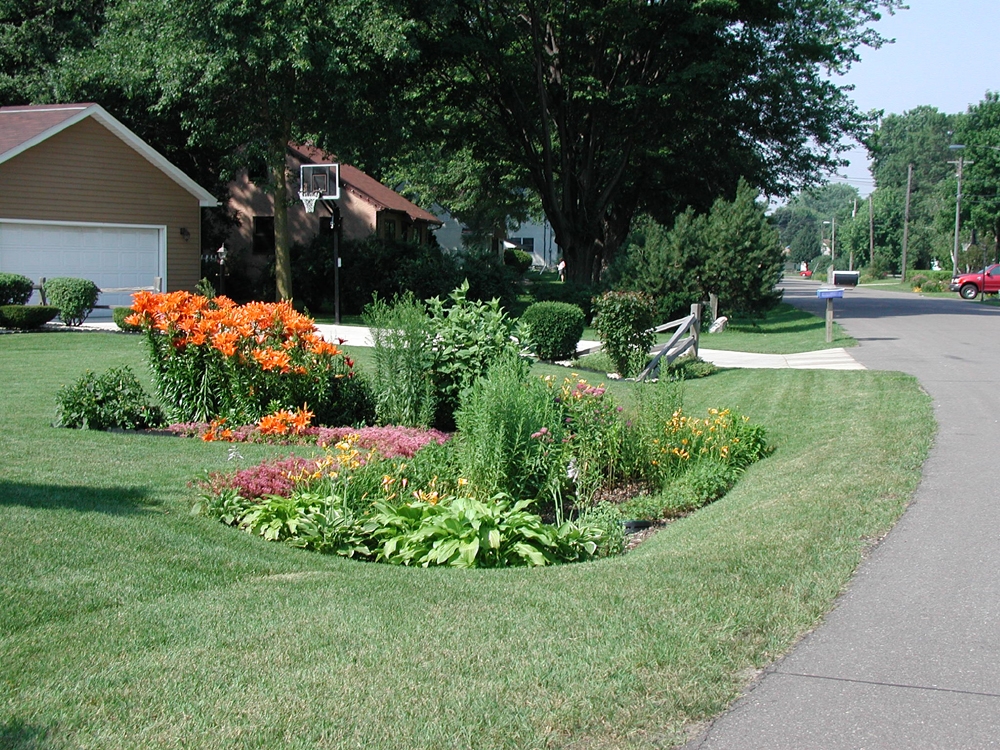Last year I wrote a blog on green roofs, so today I want to follow up with a much smaller and more versatile type of green infrastructure, the rain garden, sometimes called a bio-retention cell. These can be introduced into a small corner of your garden and have even been used as slightly modified planters along roadways where there is not enough space for a more extensive vegetated installation such as a swale.
| A vegetated swale Creative Commons Licensed: https://commons.wikimedia.org/wiki/File:Planted_brick_swale,_balfour_street_pocket_park.JPG |
Green infrastructure imitates nature as far as possible, often taking on even more of the role of water permeation and pollution removal as a small area of vegetation now needs to do the job of the much bigger area taken up by a building or roadway. A rain garden is the smallest of these and can be fitted into a tiny space, as little as one metre in diameter.
 |
| A well-established rain garden Creative Commons Licensed: https://homedecomalaysia.com/how-do-you-build-a-beautiful-rain-garden-at-home/ |
| A newly installed rain garden with extended rain-water spout Creative Commons Licensed: https://commons.wikimedia.org/wiki/File:2006NeighborsNewRG2.JPG |
Choose plants that are water-loving, but preferably quite hardy, so that you don't have to water them in the dry season. My favourite for all green infrastructure in Johannesburg is plectranthus neochilus, as it loves plenty of water but is very hardy in our dry winters.
 |
| Plectranthus neochilus Creative Commons Licensed: https://identify.plantnet.org/the-plant-list/species/Plectranthus%20neochilus%20Schltr./data |
If you are doing new paving near the rain garden, here is a great opportunity to channel the runoff into the garden rather than into a roadway or storm-water outlet. Try to give the paving a very gentle gradient, so that the water will flow quite slowly into the garden and prevent erosion.
You may find, after you have completed the garden, that your rain-water outlet is scouring away the soil, so you may want to install a splayed outlet to disperse the water. Alternatively you may be able to fashion a spray to the end of the outlet using a plastic bottle cut in half with holes in the bottom similar to a showerhead.
Your rain garden, unlike many other types of green stormwater installations, does not need any special maintenance, just the normal trimming and tidying that you would do for a normal flowerbed. Once a year, just before the rainy season, it is good to loosen the soil around the plants to encourage drainage. At the same time, you can place mulch around the plants but this is not essential.
Comments
Post a Comment